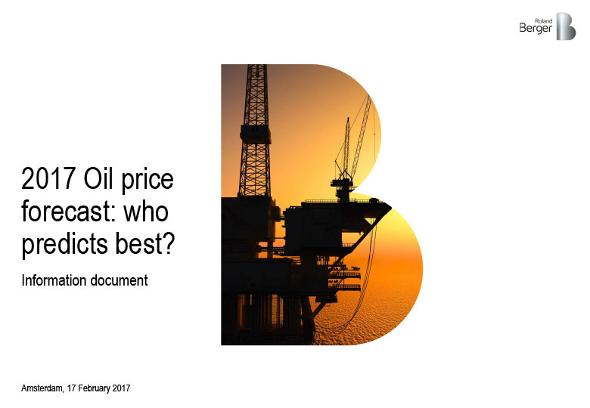2017 Oil price forecast: Who predicts best?
![{[downloads[language].preview]}](https://www.rolandberger.com/publications/publication_image/170217_oil_producers_price_forecast_2017_1_download_preview.jpg)
Since 2007, Roland Berger has published a yearly overview of available oil price forecasts. We have studied the forecasting track records of the ten largest oil-exporting countries from 1999 to 2016


Since 2007, Roland Berger has published a yearly overview of available oil price forecasts. We have studied the forecasting track records of the ten largest oil-exporting countries from 1999 to 2016. Before 2009, the top oil exporting countries outperformed the institutions (NYMEX, EIA, OECD) in correctly forecasting the oil price. Since 2009, however, the institutions have forecasted the oil price significantly better than the countries.
In the meantime, markets have become more complex and volatile. Since the start of the shale gas boom, the US has not only been one of the major producers of oil, but has also been exporting significant amounts of oil. Oil producing countries – Saudi Arabia in particular – have often adapted their oil output to price levels, thereby influencing the oil price. After resisting cutting down on production for over a year, the OPEC decided in November, 2016, to reduce crude oil production by 1.8 million barrels per day. This significant drop in supply should elevate the low oil price.

What will the future bring? Will the oversupply be curtailed by OPEC countries?
This time we used the budgeted oil prices of the top 3 most accurate countries to forecast the oil price for the year ahead. However, we didn't only rely on the accuracy of last year's forecast and next prediction, but also on our analysis of market dynamics.
It looks as if the oil price will remain lower for longer. For 2017, countries and institutions expect a price range of USD 50 to USD 55 dollars per barrel. Read all the details in our study.

![{[downloads[language].preview]}](https://www.rolandberger.com/publications/publication_image/170217_oil_producers_price_forecast_2017_1_download_preview.jpg)
Since 2007, Roland Berger has published a yearly overview of available oil price forecasts. We have studied the forecasting track records of the ten largest oil-exporting countries from 1999 to 2016
